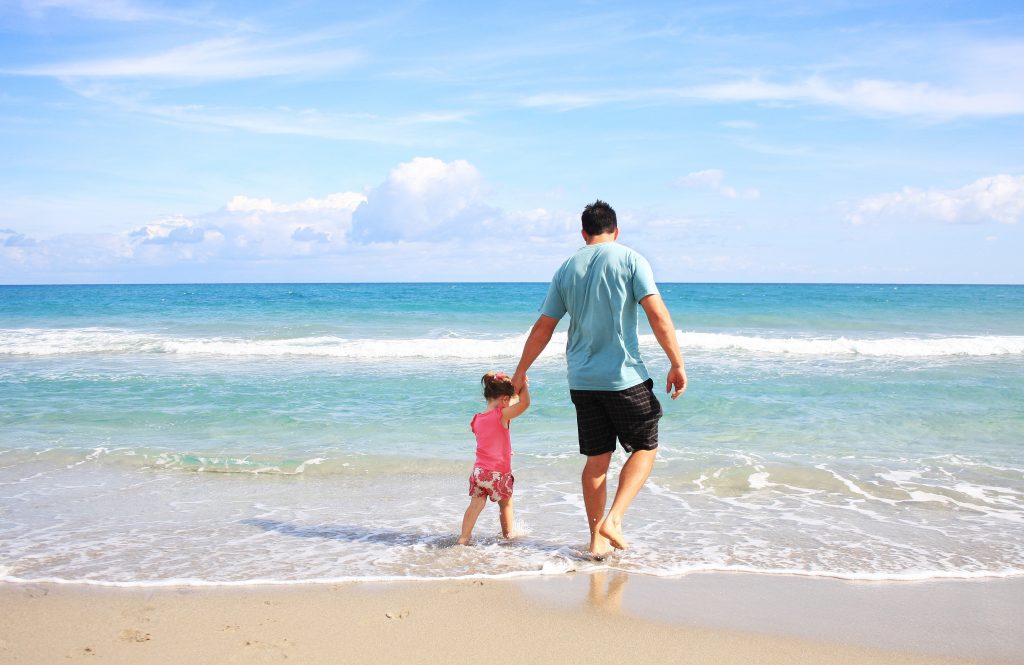
Sun safety begins in infancy. Just one or two bad sunburns in a child’s youth can contribute to their risk of skin cancer in adulthood. Skin cancer is one of the most common forms of cancer and can be incredibly dangerous. When discovered and treated early, most skin cancers have a 99% survival rate.
Non-melanoma skin cancer accounts for more cases of cancer than all other cancers combined. With more than 5.4 million cases diagnosed in 2019 alone, this completely preventable cancer exacts a heavy toll on people’s lives each year. Melanoma skin cancer is rarer but far more aggressive and dangerous.
Building robust and healthy sun safety habits in childhood can prevent skin cancer and other UV damage. Skin damage comes from two different ranges of UV rays:
- UVA rays are the leading cause of melanoma skin cancer, the most dangerous form. These rays have higher wavelengths but have lower energy levels than UVB rays. They penetrate the skin deeply causing indirect damage to the skin’s cells. UVA rays are often associated with aging as their effects have been linked with premature aging, wrinkles and fine lines. Unlike UVB rays, UVA rays aren’t absorbed by the ozone layer, so 95% of UV rays that reach the ground are UVA rays.
- UVB rays are as dangerous as UVA but are thought to be a leading contributor to melanoma skin cancer if you experience severe sunburns before 20. UVB rays are shorter in wavelength but have a much higher energy level. UVB causes the most damage to the top layer of the skin and they directly damage DNA. Even though only 5% of UVB rays reach the earth’s surface, they cause the most skin cancers and are the most commonly responsible for sunburns.
We need Vitamin D to increase our absorption of calcium and the natural strengthening of our bones. Being in the sun helps our bodies naturally produce the required vitamin D, however, unless you are drastically deficient you won’t need much supplement. You can supplement your diet with vitamin D fortified milk and reduce your need for sun exposure.
Below, we discuss sun safety tips that are helpful to build into the habit during childhood so that the practices follow your children into adulthood and prevent future skin cancer diagnoses.
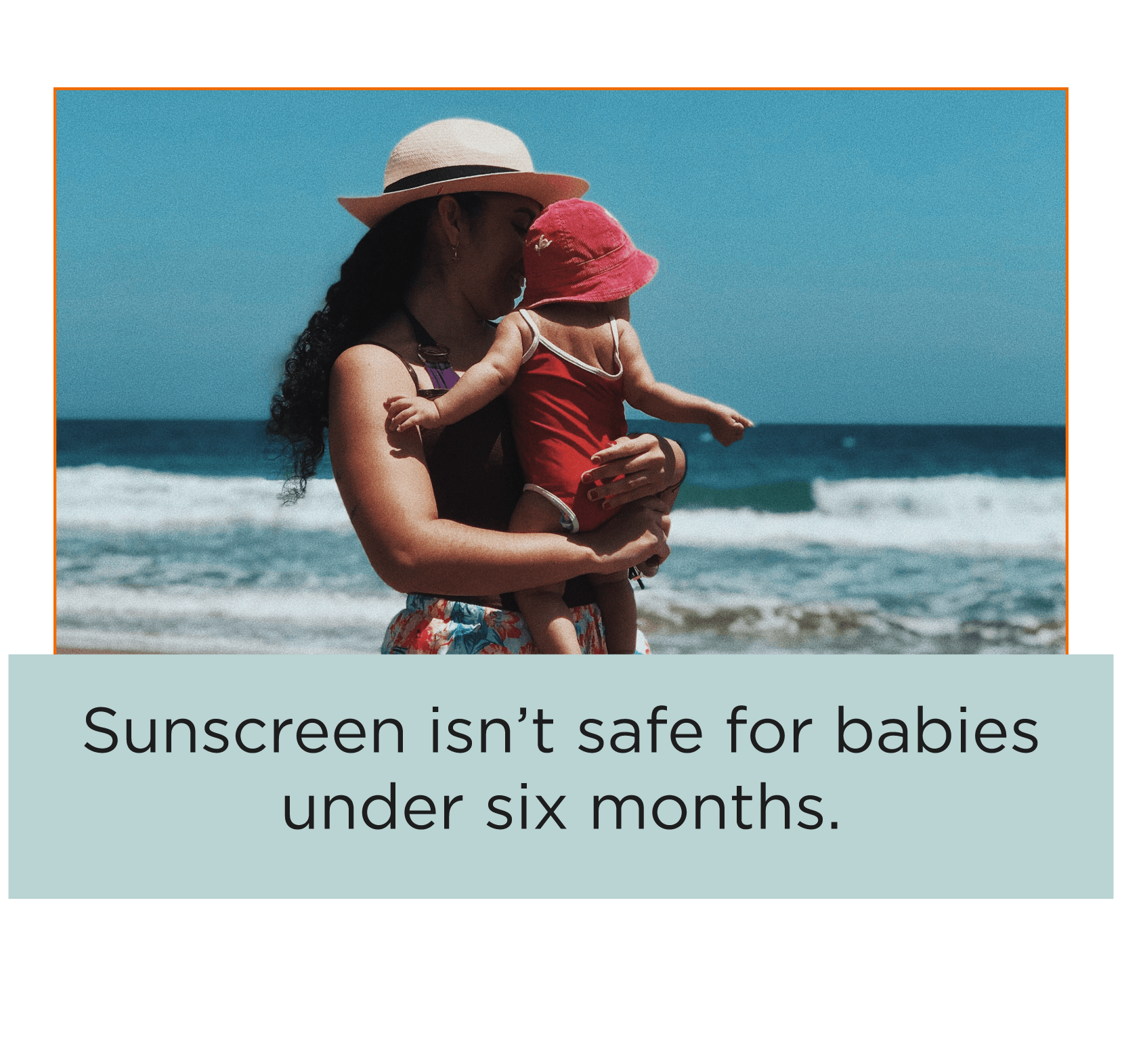
1. Avoid Direct Sun Exposure for Infants Under Six Months
Doctors recommend limiting sun exposure for the first six months of a baby’s life. However, unless you stay indoors for the first six months of your child’s life, complete prevention of exposure is nearly impossible. However, making use of shady spaces, lightweight, breathable muslin car seat covers, stroller shades, and similar options while you are out and about will help you avoid direct sunlight exposure for your baby.
Sunscreen isn’t recommended for babies under six months because they tend to suck on their hands and feet. You can often find sun hats with SPF ratings for babies that fasten under their chin to help protect them in the sun. You can also find SPF-rated summer clothes that keep your baby’s skin covered and cool.
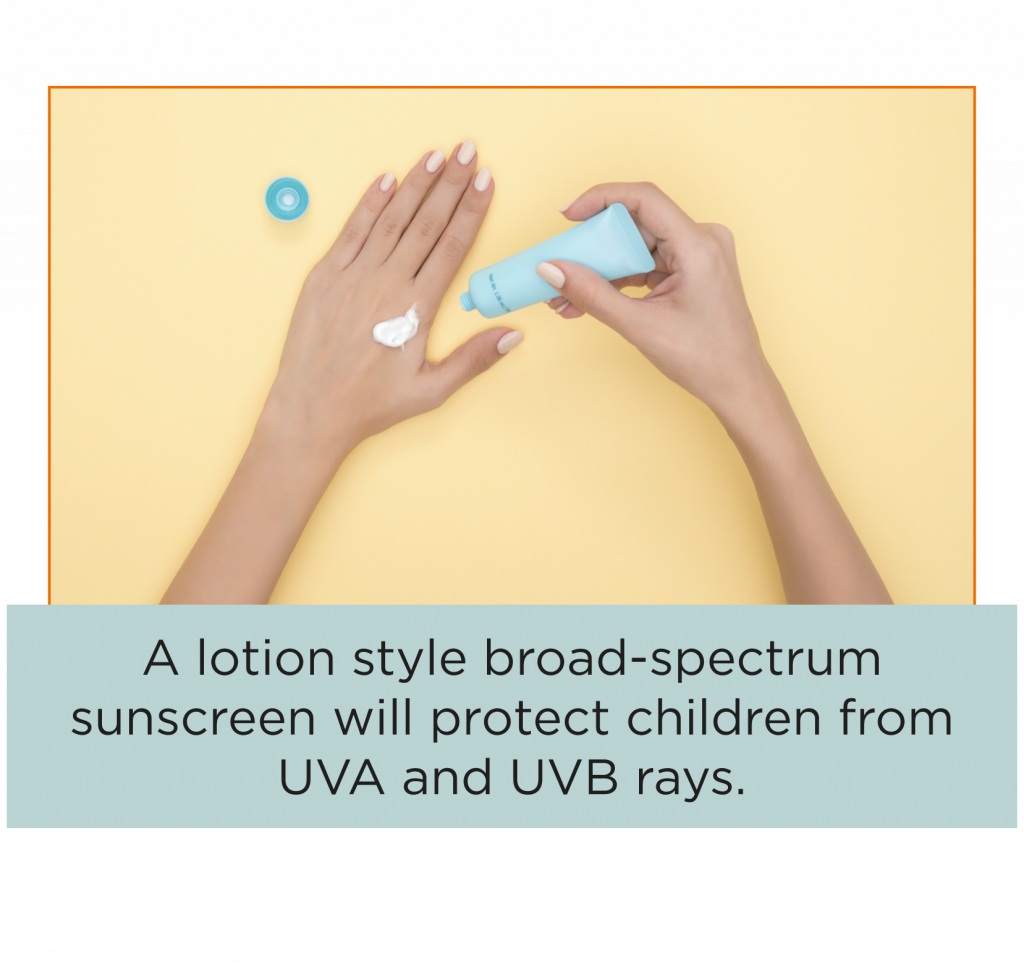
2. Use Broad Spectrum Sunscreen SPF30+
For kids old enough for sunscreen, using a lotion style broad-spectrum sunscreen will protect them from UVA and UVB rays. Look for a cruelty-free and toxin-free option to reduce your impact. Further, SPF 30 is the lowest rating that has been proven to have adequate protection for all skin types.
When applying sunscreen, spray-on sunscreens are convenient but lack the coverage density of lotion style sunscreen. If you choose a spray-on sunscreen, take care to apply a decent layer and rub it in to effectively protect your child’s skin. Learn more about proper sunscreen application in the next tip.
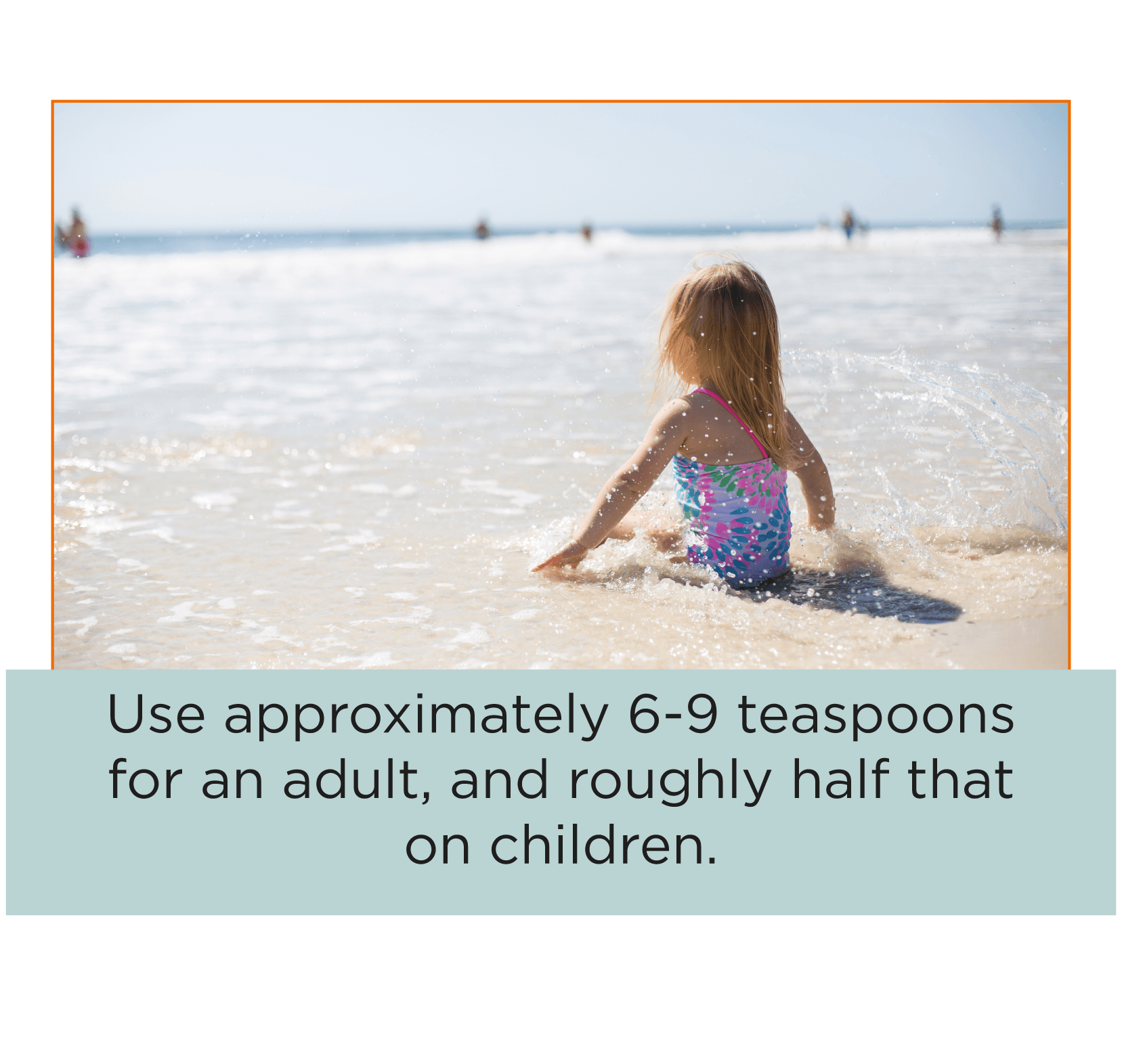
3. Use the Tea Spoon Method for Applying Sunscreen
Most people never learn the proper amount of sunscreen to apply, and the packaging doesn’t explain well either. It is recommended by some sources that an average adult use about two teaspoons worth of sunscreen for each third of their bodies, apply 6-7 teaspoons total to cover head, face, shoulders, torso, and legs.
Other resources suggest as much as nice teaspoons for the entire body. Make the decision based on your tendency. This method is more art than science, but be generous. A palm full should cover the top half and another palm for the lower. Don’t miss your ears, hands, feet, underarms, and the back of your knees.
Only one in four children regularly use sunscreen, and even then, not always enough. When applying your child’s sunscreen use the teaspoon method described above, but about half the amount for children. Even if a sunscreen is described as water-proof and sweat-proof, you will need to reapply this every two hours for full effectiveness.
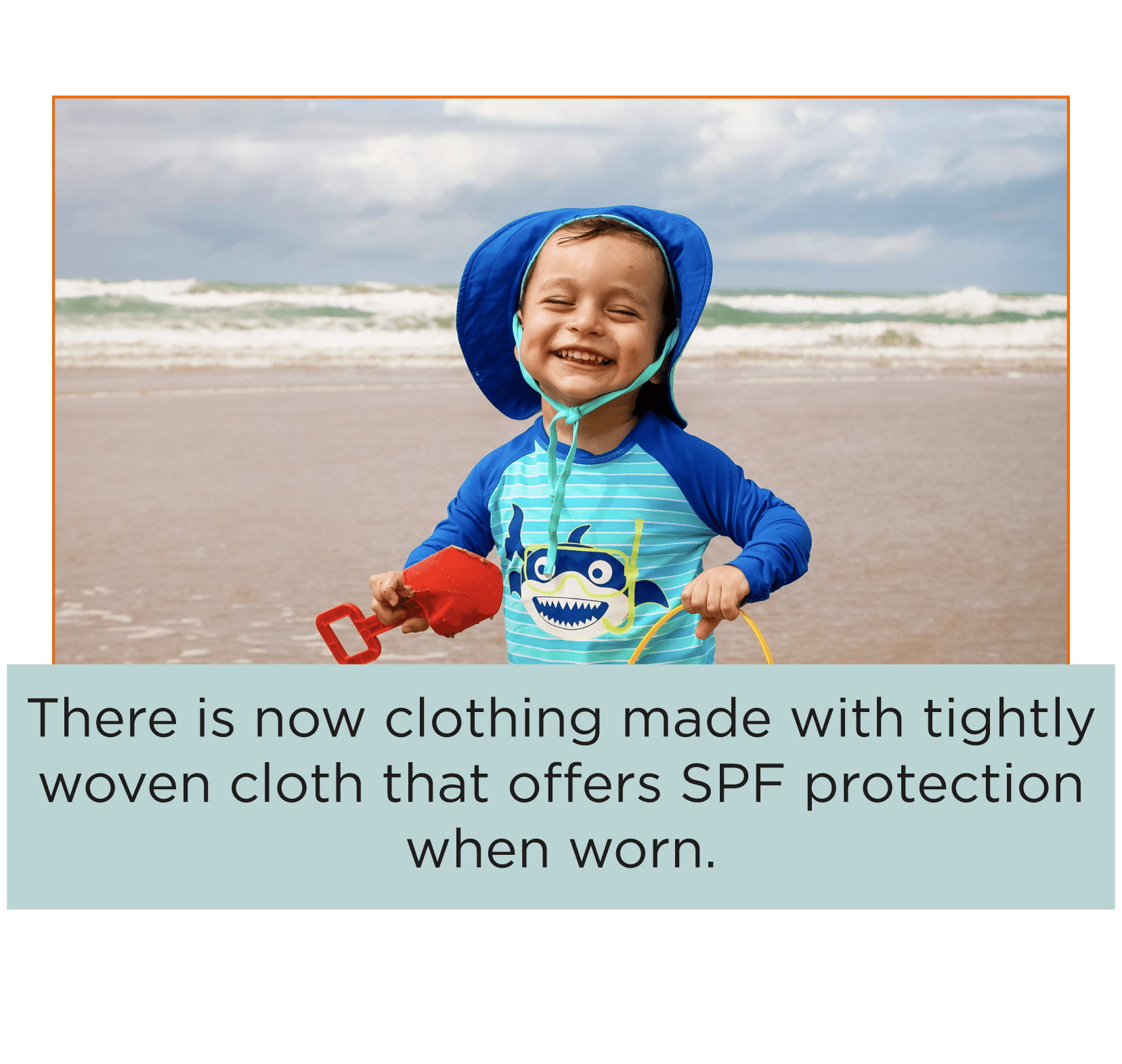
4. Wear Clothing that Covers and Protects
Many children’s summer clothing is now made with tightly woven cloth that offers SPF protection when worn dry. Some swimwear also provides SPF protection. These clothing types are specifically designed to cover more skin surfaces and prevent overheating during outdoor play.
When these options are unavailable, wearing long pants, skirts, and sleeve shirts will prevent unnecessary sun exposure. Make sure they are tightly woven but lightweight to reduce the likelihood of heat rash and heat stroke.
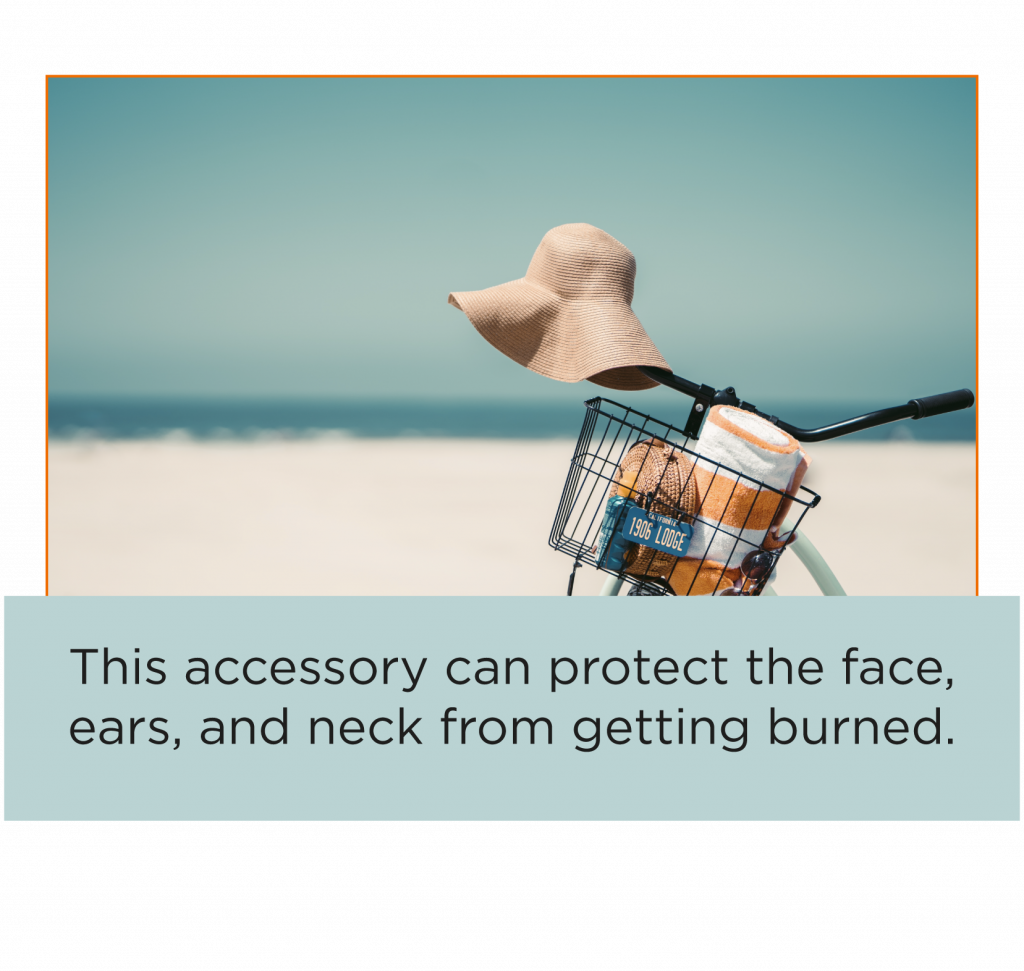
5. Wide Brimmed Sun Hats
For many, wide-brimmed sun hats are an essential part of their summer wardrobe. For kids, this accessory can protect their face, ears, and neck from getting burned and act as a fashionable piece of clothing to add to their outfits. It’s best if the hat has at least a 3-inch wide brim to cover the entire neck and shoulder area.
If sun hats aren’t your kid’s favorite thing to wear, choose a hat that has a fabric drop cloth to cover ears and shoulder and avoid baseball caps and visors. If those hats are the preference, pay special attention to apply sunscreen around the face, ears, neck, and shoulders.
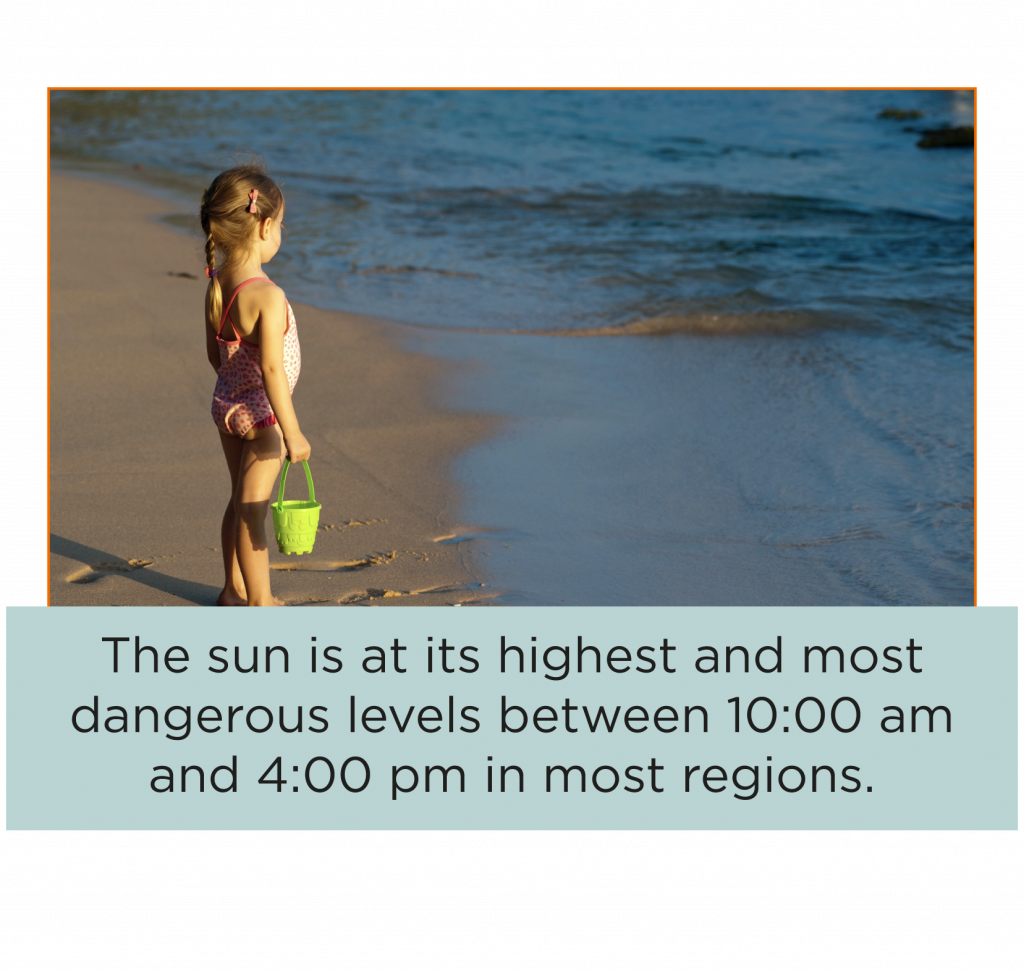
6. Avoid the Harshest Hours of Sunlight
The sun is at its highest, and most dangerous levels between 10:00 am and 4:00 pm in most regions. This is the period when the sun is most likely to cause sunburns and increased damage to your skin. Further, this is the hottest period of most days and can lead to more significant heat exhaustion and dehydration occurrences.
When the sun is harshest, the hours are a great time to retreat indoors for lunch, rest, and plenty of refreshing liquids. Another great option during these hours is to spend some time in the shade reading a book or doing some type of art or quiet play. Also, remember that it doesn’t have to be hot out to get sunburned.
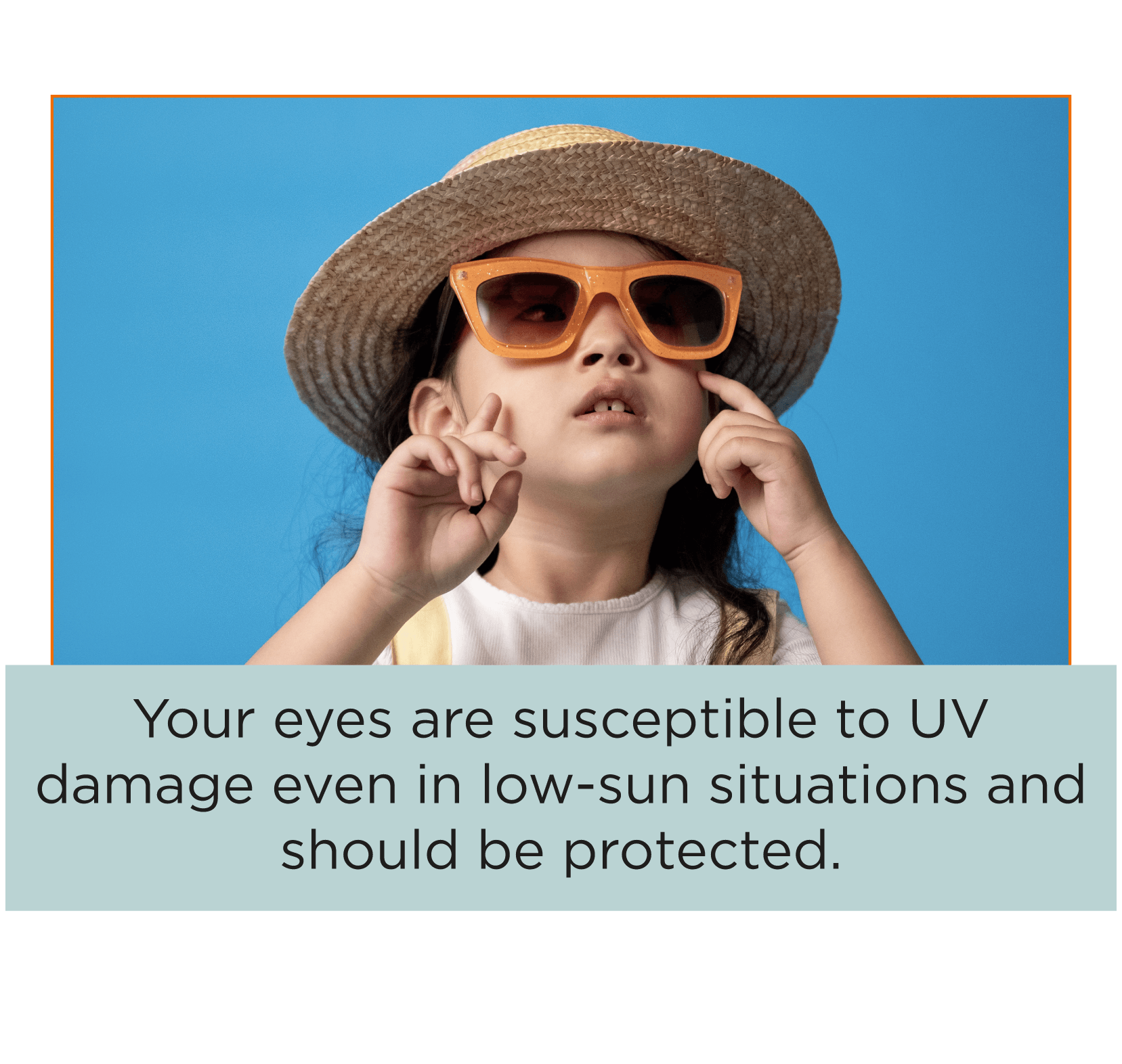
7. Sunglasses with at Least 99% UV Protection
Your eyes are susceptible to UV damage even in low-sun situations. You can get sunglasses for infants and young children that are durable and have elastic straps in addition to traditional arms. For older kids, look for durable or flexible sunglasses to prevent breaking. Add a neoprene lanyard to add fun fashion and mitigate their likelihood of losing the glasses while playing.
If you and your family will be on or near the water, it’s essential to protect your eyes from reflections as well as direct sun. Polarized glasses and goggles will help with this. Make sure the goggles you choose fit well and protect from the light and water entering the eyes. Foreign contaminants can make sun exposure more painful.
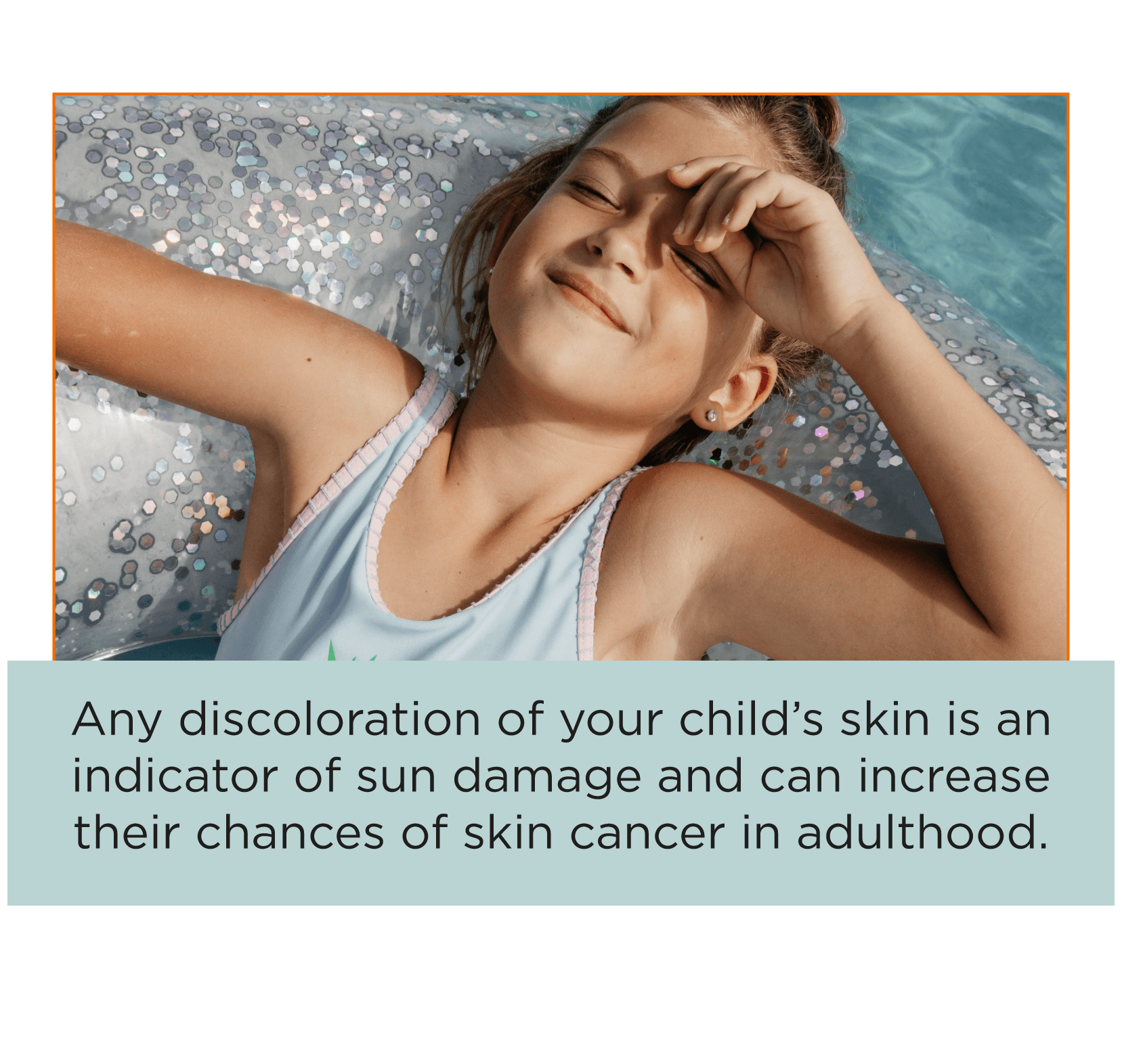
8. Say No to Tanning
Any discoloration of your child’s skin is an indicator of sun damage. While the glowing bronze skin tone is more desirable to teens, achieving this is damaging to their skin and increases their chances of skin cancer in adulthood. Natural sun and tanning beds are both harmful to our skin.
The tanning habit often continues into adulthood and can contribute to early aging, wrinkles, sun spots, and other blemishes beyond skin cancer. Sunbathing isn’t all bad, but make sure your child or teen is wearing appropriate sunscreen. If your teen insists on that warm bronze tone, consider using a tinted sunscreen or fake tanner. This will give the appearance of a tan without the damage.
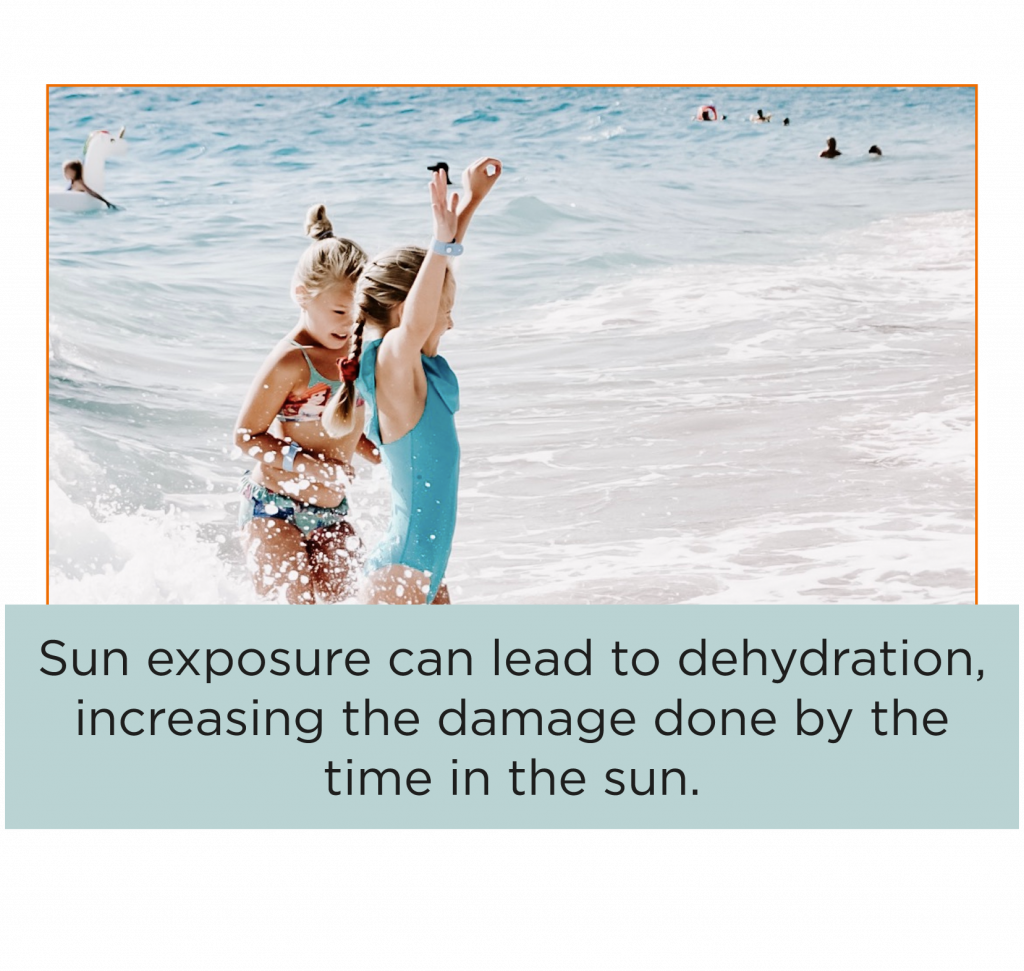
9. Stay Hydrated
Sun exposure can lead to dehydration, increasing the damage done by the time in the sun. Dehydration can lead to headaches, lethargy, dry, parched mouth, excessive tiredness, and fewer tears when crying. You may also notice your child stops sweating and becomes irritable and disoriented, contributing to heat exhaustion. Seek immediate medical attention if any of these symptoms occur and follow care instructions from medical staff.
Ensure that fresh, chilled water, sports drinks, or 100% juice are available to rehydrate your child during play. If they begin showing signs of dehydration, seek shade and a cooler environment for recovery. Getting a sunburn will increase your dehydration and lead to shock, so it’s essential to take breaks and drink plenty of water. Make it a habit to drink water every 30 mins and take a break every two hours for sunscreen reapplication and rest.
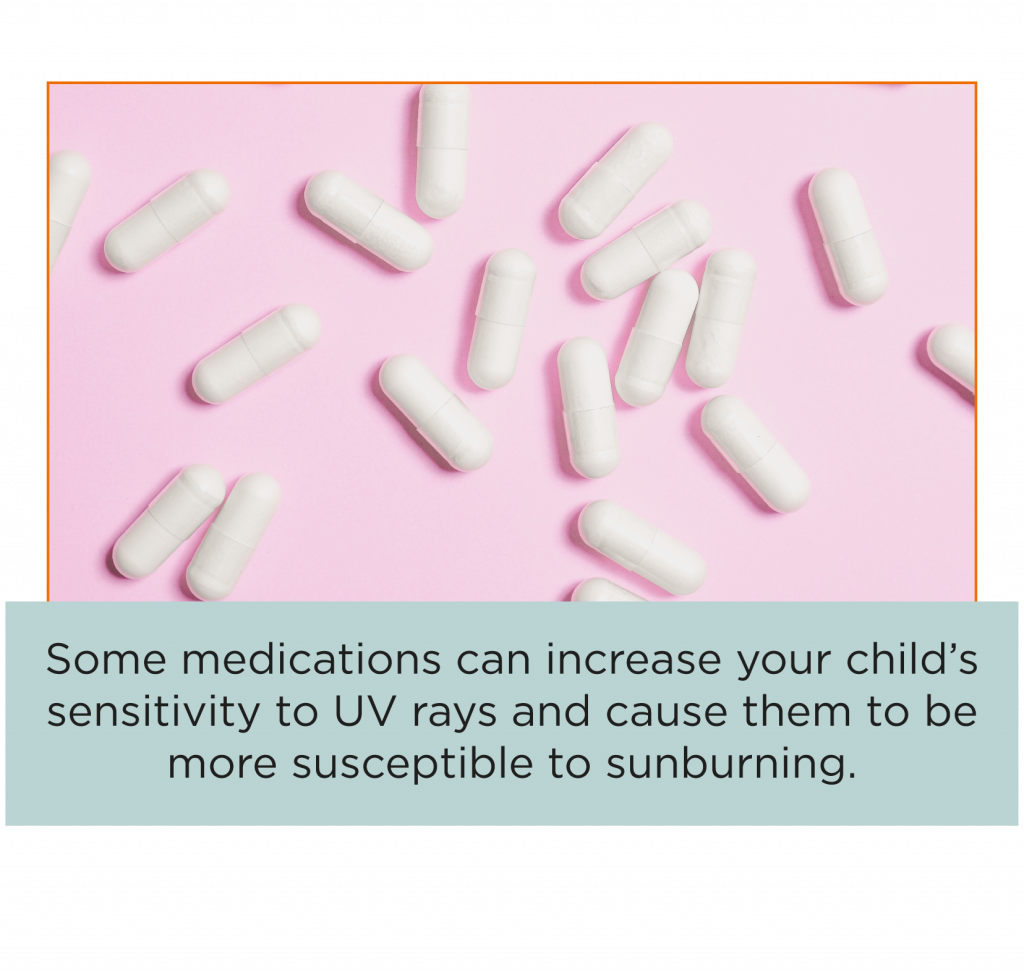
10. Check Medications
Some medications can increase your child’s sensitivity to UV rays and cause them to be more susceptible to sunburning. It is best to stay out of the sun entirely during high UV times, such as between 10:00 am and 4:00 pm on any given day. When you’re looking at your child’s medication, keep an eye out for the phrase “photosensitivity” or “UV sensitivity” as a side effect.
Some medications that list these side effects include many commonly used antihistamines, like allergy medications or cold medication, antidepressants, anti-anxiety medications, and most chemotherapy drugs. Direct UV exposure, like sunbathing and tanning beds, will cause trigger reactions. Indirect UV exposure like the sun’s reflection on the pavement or through windows can also trigger these side effects. Reactions can be simply burning easier or developing hives, rashes, or blisters.
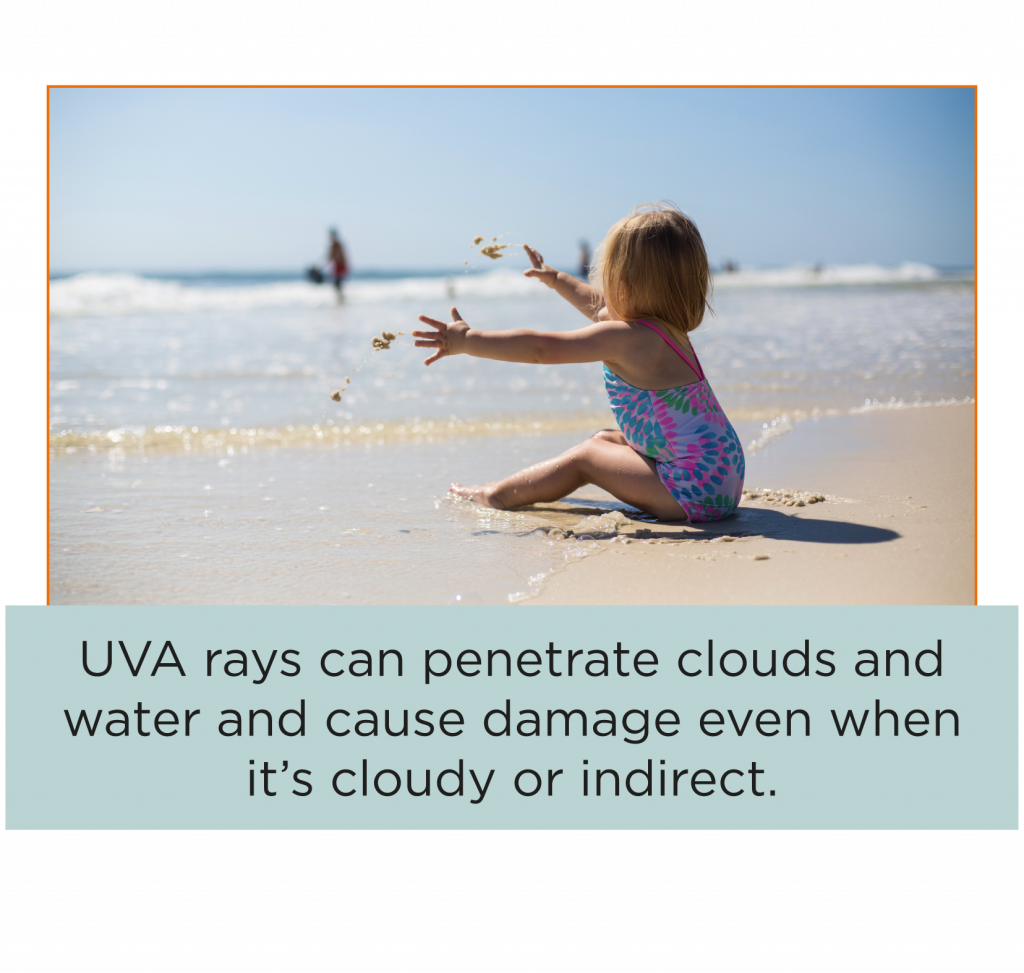
11. Remember to Protect Even When its Cloudy
UV rays don’t dissipate just because they’ve hit the ground. Your child can still get sunburnt on a cloudy day because UV rays can still permeate cloud cover and reflect up into the atmosphere. UVA rays can penetrate clouds and water and cause damage even when it’s indirect. UVB rays penetrate and bounce easier than UVA and can be intensified by reflective surfaces like water or snow.
While severe burns are less likely on cloudy days, they are just as dangerous as full sun days. The best options for cloudy days are covering your skin, wearing sunglasses, and staying hydrated while you’re out playing or working. If you are in high altitude areas, there is less ozone to absorb the harmful UV rays, so take extra precautions when you and your family are outdoors.
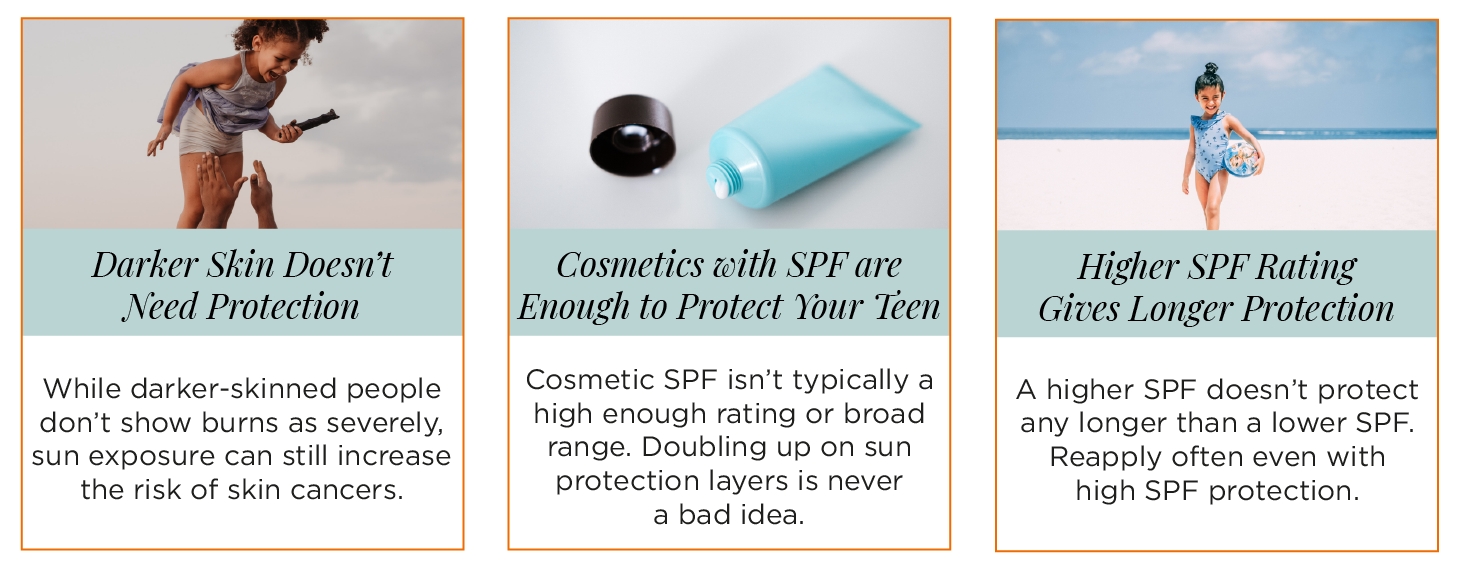
12. Research and Debunk Sun Myths
There’s a lot of misinformation about sun safety out there. It’s essential to do your research and verify the information you are being given. Here are a few of the top myths.
Darker Skin Doesn’t Need Protection.
While darker-skinned people don’t show burns as severely or often as fair-skinned individuals, the damage is still done to your skin no matter how darkly your skin is pigmented. Your child’s burns may not turn red or blister the same way that their red-headed friend’s will, but they’re still contributing to their skin cancer chances.
Cosmetics with SPF are Enough to Protect Your Child
This is more applicable to teens who are wearing makeup regularly. Cosmetic SPF isn’t typically a high enough rating or broad range. Doubling up on sun protection layers is never a bad idea. Find true sunscreens that can replace other parts of your cosmetic routine. Options that hydrate and moisturize can still provide coverage and protection.
Higher SPF Rating Gives Longer Protection
A higher SPF doesn’t protect any longer than a lower SPF and can give a false sense of protection when your child is out in the sun. If your child is fair-skinned, using a 50-75 SPF may protect them better than a lower SPF, but the length of time it is effective remains the same.
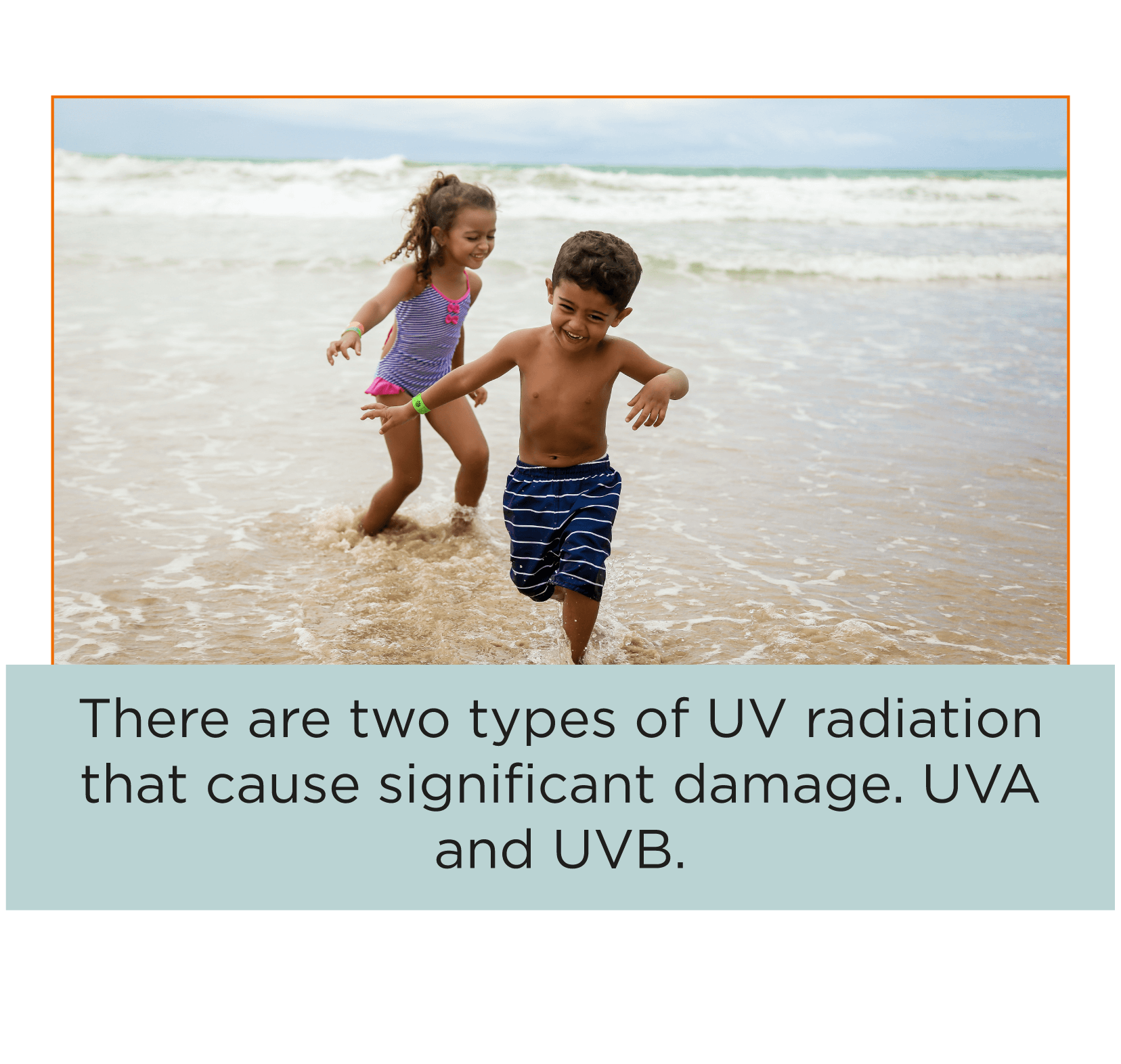
All About Sunscreen
Medical professionals can’t state the importance of sunscreen emphatically enough. It is our best barrier to significant skin damage that can occur in children and adults. Some skin cancers are easy to treat and slow-growing. Others are aggressively malignant and inoperable. You don’t get to choose the type of cancer your child’s sun damage causes.
How to Pick The Right Sunscreen
As explained above, there are two types of UV radiation that cause significant damage. UVA and UVB. Finding a broad-spectrum sunscreen covers your bases for both of these radiation types. Finding a sunscreen that works for you and your family will make it easier to keep up with adequate application.
You may choose a moisturizing option if you tend toward dry skin. Some people prefer anti-oxidant sunscreens for their daily routine. Some have other preferences. Finding a sunscreen that fits your needs, keeps your skin healthy, and serves your values is important. Make sure to research your options, and try suggestions from your family and friends.
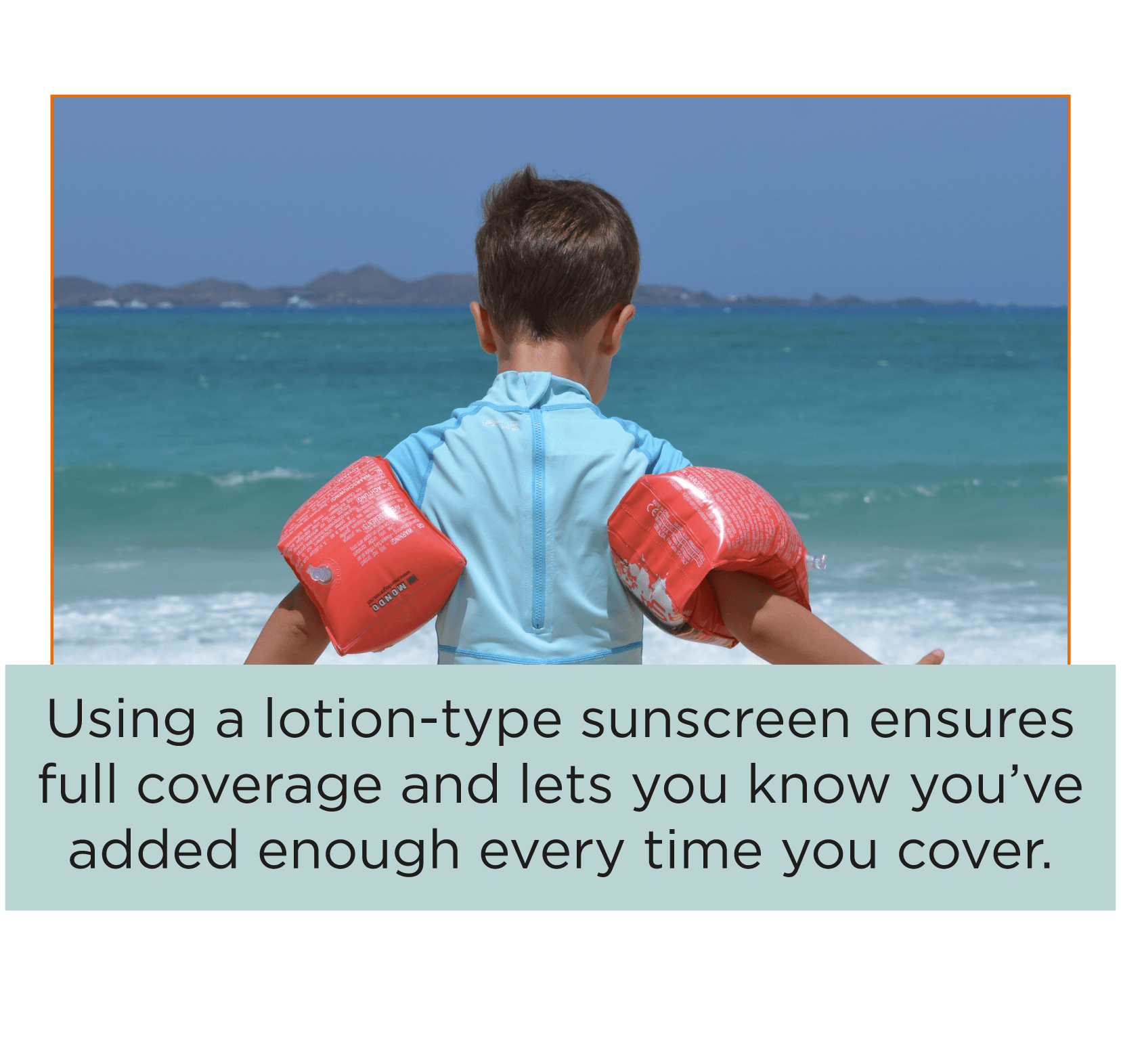
How to Properly Apply Sunscreen
Spray-on sunscreen options seem very convenient. However, they often don’t cover evenly and do not give enough overall coverage. Using a lotion-type sunscreen ensures full coverage and lets you know you’ve added enough every time you cover. Further, some evidence points to aerosol spray sunscreens contributing to environmental effects and exacerbating asthma for those who use them.
Add the lotion generously. One-two teaspoons for the upper half of your child’s body and the same for the lower half (depending on their age) is the best measurement guideline available.The teaspoon rule is recommended by most dermatologists and ensures that you don’t miss any part of your child’s exposed skin.
Don’t forget to cover your lips. Sunburns on lips can make life miserable for you and your child. Your lips are more sensitive to sun and windburn and can dry out and crack painfully without a protective barrier. You can choose lipstick or lip balm with SPF 30 or higher to safely protect yourself from this unpleasant experience.
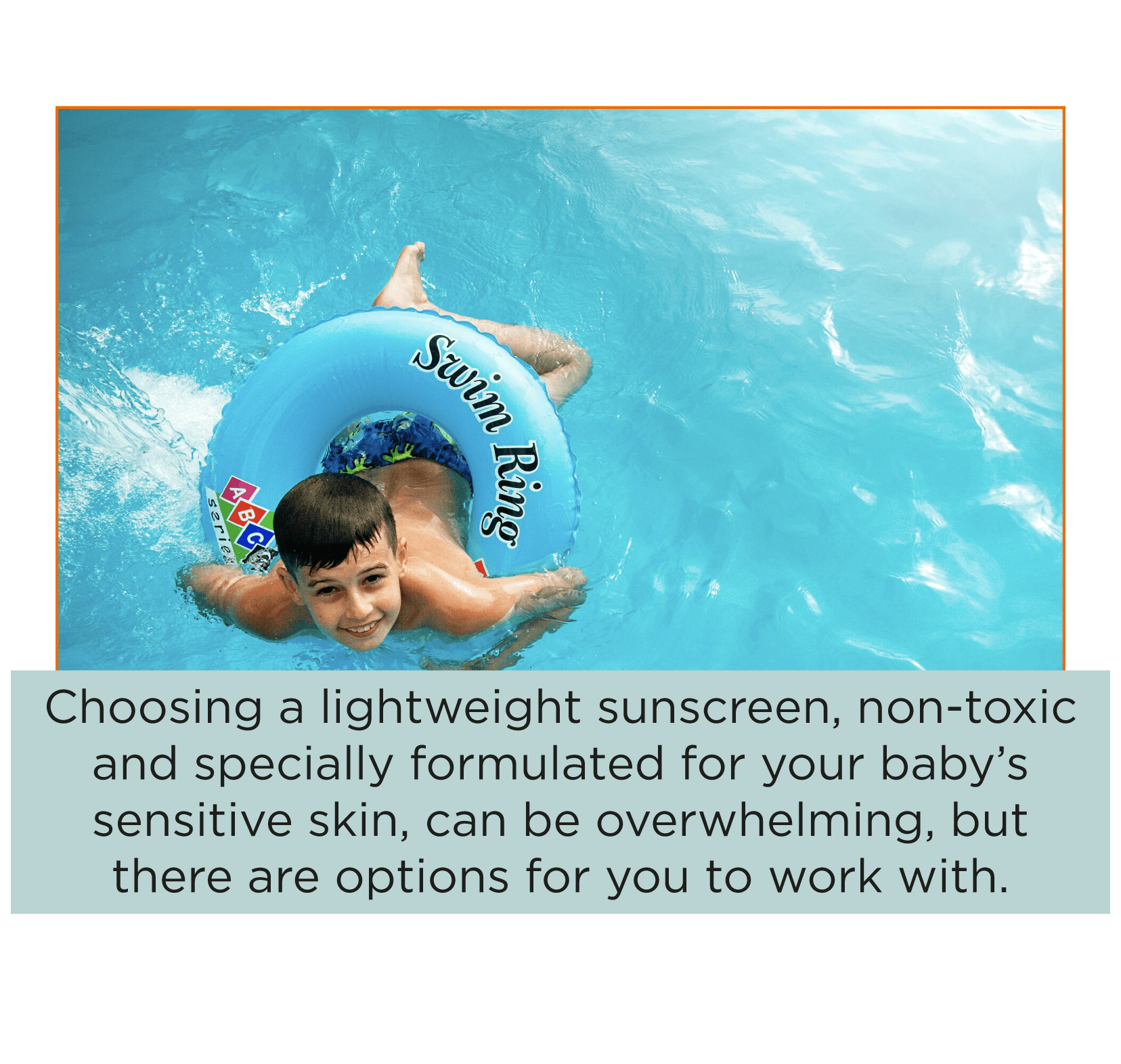
Sunscreen for Babies
Regulations and suggestions on baby sunscreen aren’t so clear. However, parents and doctors can agree that babies can’t be kept out of the sun 100% of the time and need protection options.
Most pediatricians suggest carefully applying sunscreen to baby’s face, backs of the hands, and tops of feet when they’re likely to be in the sun, for even just a few minutes. Choosing a lightweight sunscreen that is specially formulated for your baby’s sensitive skin, can be overwhelming, but there are options for you to work with.
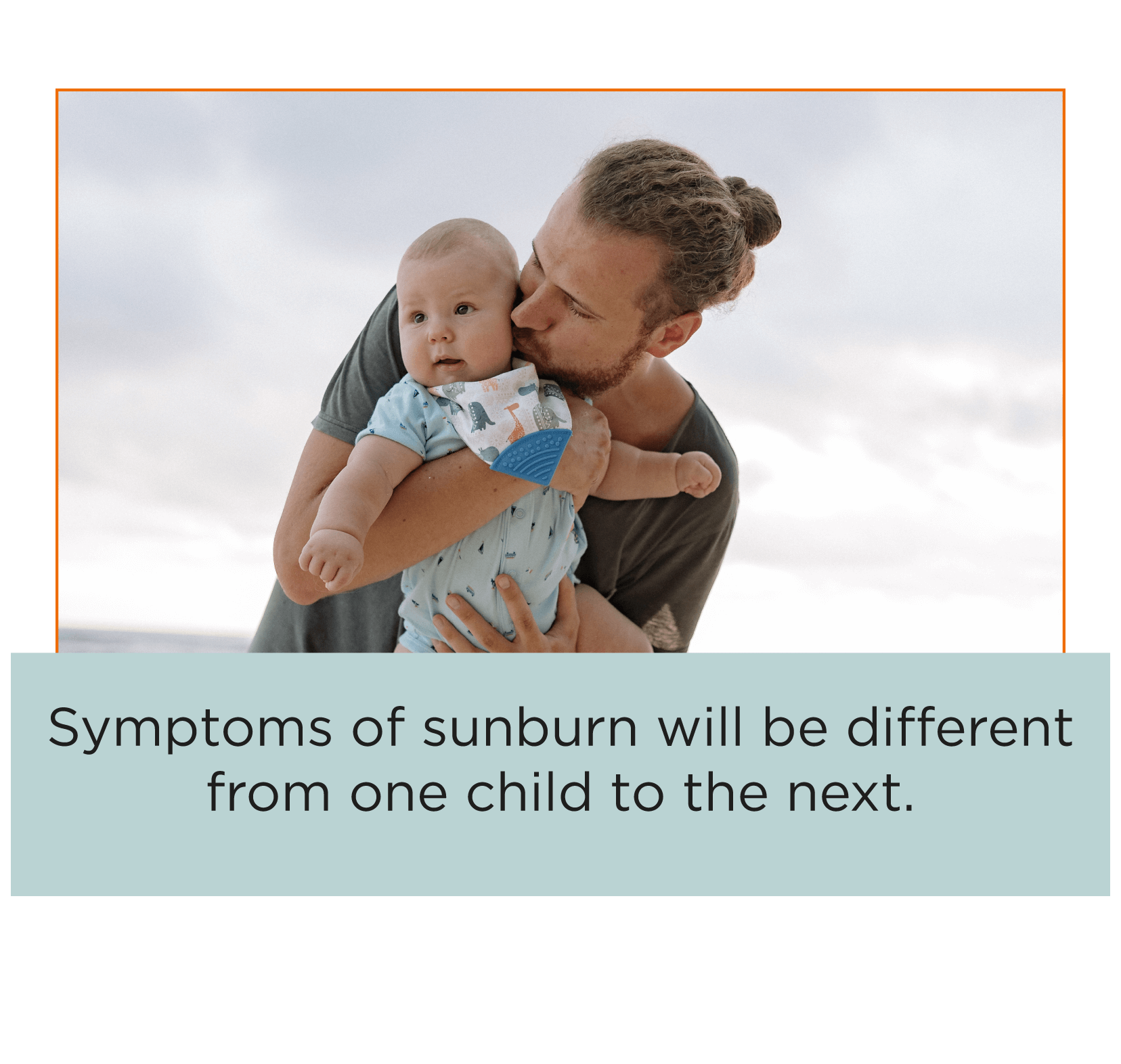
Sunburns
Even with the best preventative measures, sunburns happen. The pain and discomfort can be miserable for children and parents alike. However, there are actions you can take to alleviate the worst of it. Symptoms of sunburn will be different from one child to the next.
The first signs of severe sunburn are often pain, blistering, dehydration, and even shock. In the case of shock seek immediate medical attention. Mild sunburns will show up as red and slightly tender skin that becomes dry and itchy a few days later. More severe sunburns can blister and sting to the touch. Sunburns can also come with chills, swelling in the affected skin, mild fever, dizziness, tiredness, disorientation, and fainting.
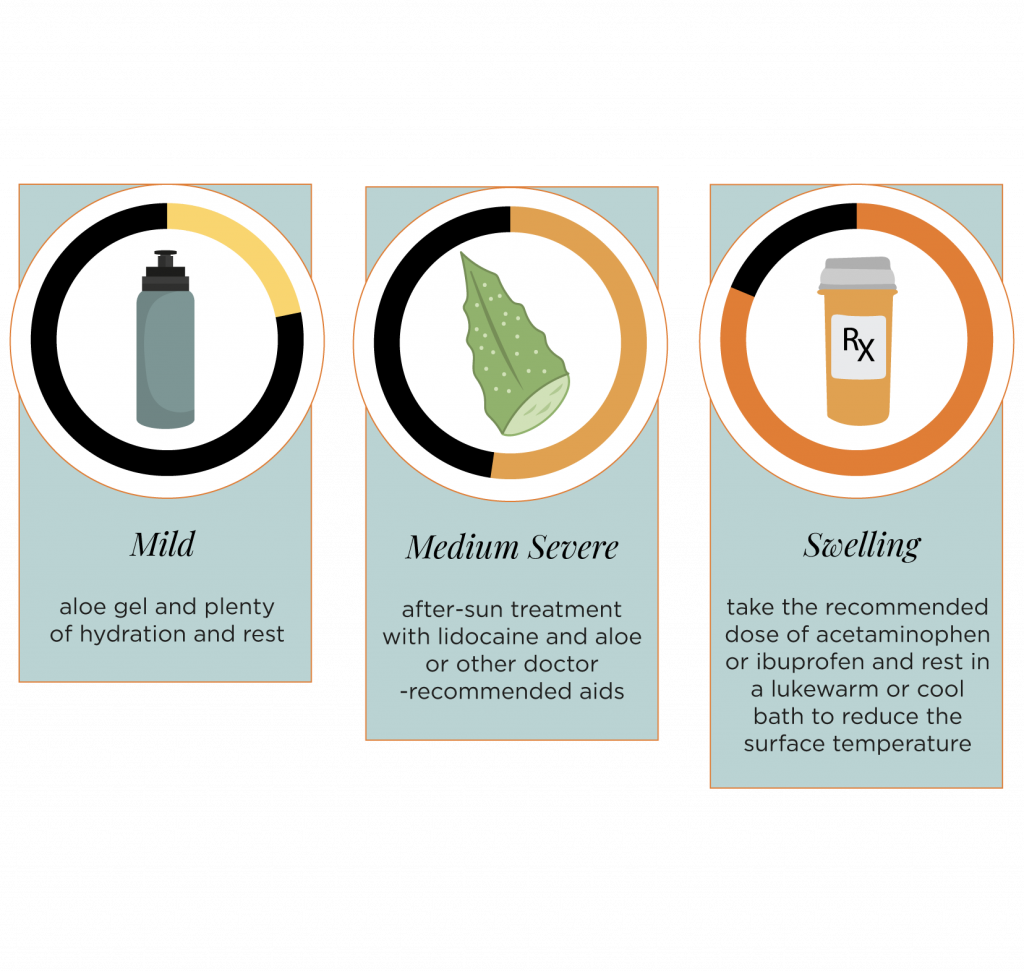
What to Do If Your Child Gets Burned
Treatment of mild burns can be as simple as an aloe gel and plenty of hydration and rest. More severe burns may need an after-sun treatment with lidocaine and aloe or other doctor-recommended aids. Regardless, sunburns cause dehydration, and it’s essential to rehydrate without caffeine, as it can hinder the process of rehydrating your cells. Water, sports drinks, and juice are all great options for helping your children stay hydrated.
For swelling, have your child take the recommended dose of acetaminophen or ibuprofen and rest in a lukewarm or cool bath to reduce the surface temperature. Cool compresses may help reduce the pain at the burn’s edges, where the pain is often worse.
When to Call a Doctor
Each child will be different in how to treat and react to a sunburn. If you have any doubts about the treatment, contact your child’s doctor. They’ll be able to give you more specific medical advice knowing more about your child and their needs.
If your child’s burn blisters begin to run a fever, become lethargic, or demonstrate symptoms of heat exhaustion or heat stroke, take them to the doctor or urgent care nearest you. Don’t pop or drain blisters because this can introduce bacteria and encourage infection. Keep your child cool and hydrated while you await treatment.
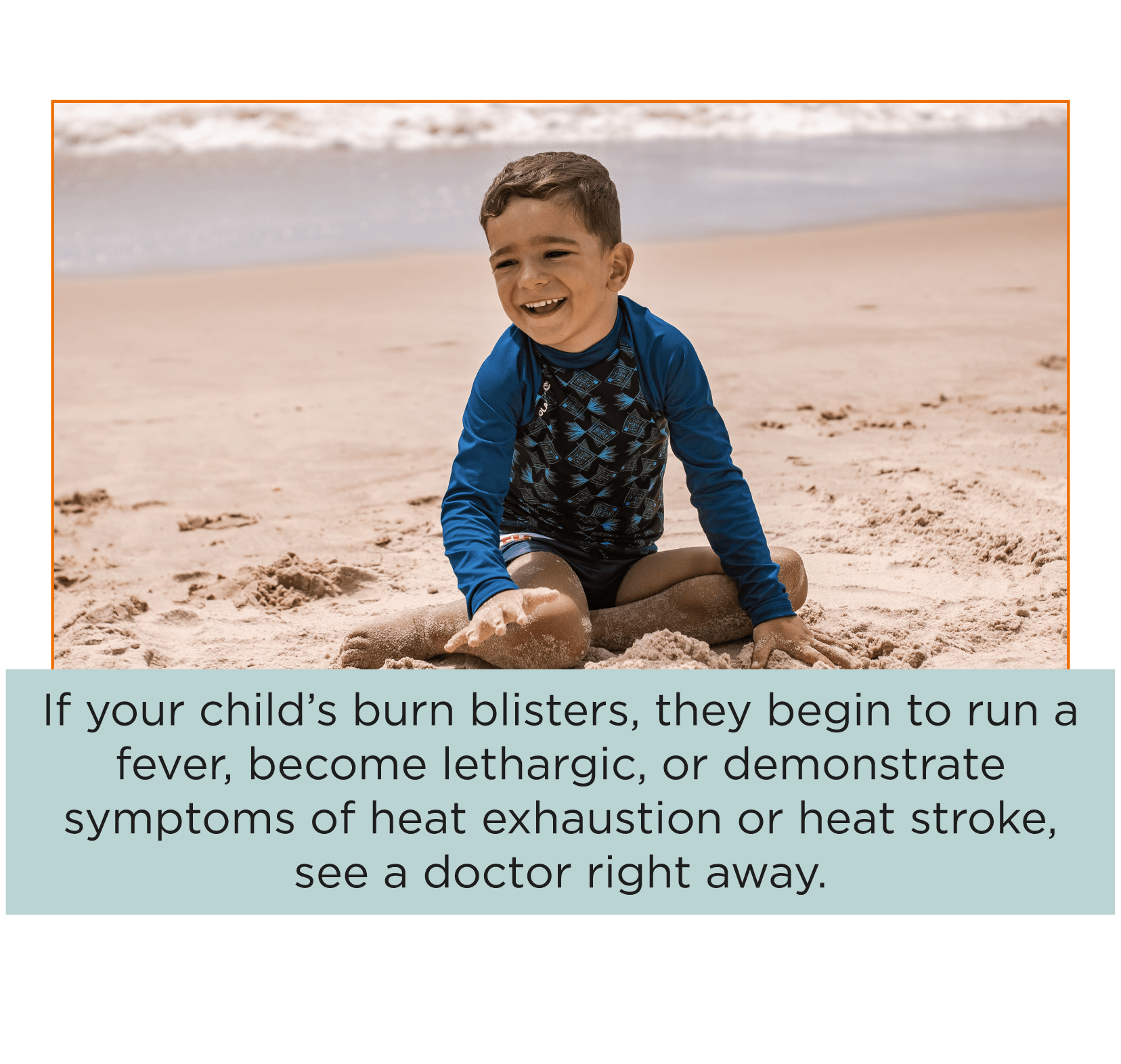
Additional Resources
There are plenty of resources to research more into skin cancer prevention and child sun safety issues. Many of these resources apply to you and your family, no matter their ages.
- Cancer.org – Skin Cancer Resource Center
- John Hopkins Hospital – Sunburn Treatment
- Kids Health – Sun Safety
- Skin Cancer Foundation – Prevention
- American Academy of Dermatology
- University of California – San Fransisco – Skin Cancer Prevention
- Bio-Med Center – Sun Safety at Different Ages
- JAMA Network Pediatric – Sun Protection Practices for Children
- Nationwide Children’s Hospital – Sunscreen and Sun Protection
Our skin is our largest and most exposed organ. It is essential to teach our children the skills to protect them from sun damage and build healthy second-nature habits to prevent skin cancer and other UV damage ailments in their future. Consider the products and actions you use now and how you can improve your child’s future with thorough sun protection.

